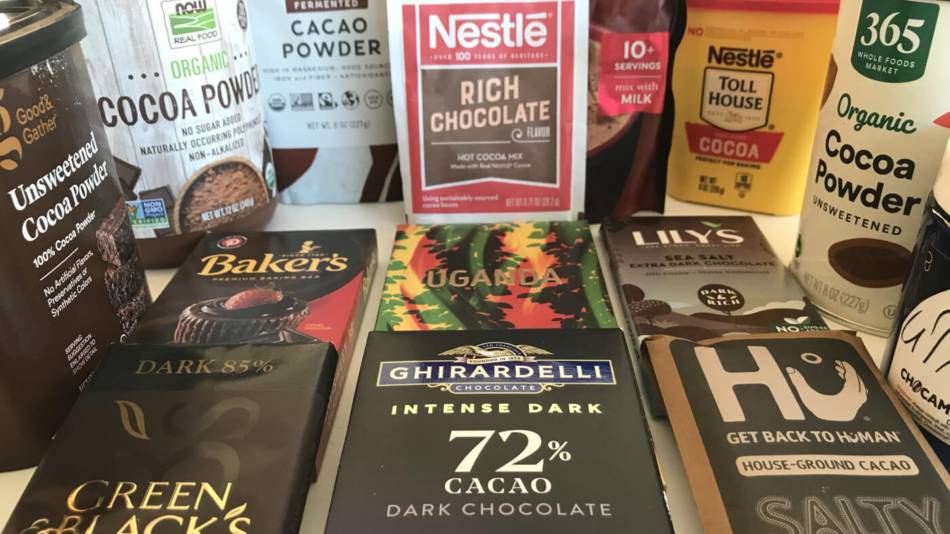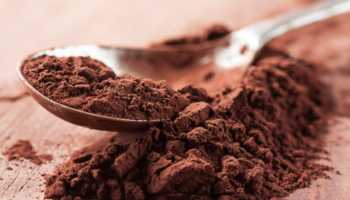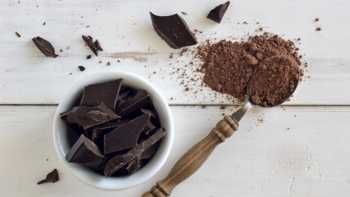
Answer:
Cocoa is the dark, flavanol-rich stuff that comes from cacao beans that have been roasted and processed. This separates the cocoa solids (known as cocoa liquor) from the fats (which become cocoa butter). The cocoa liquor is the basis for dark and milk chocolates or can be dried into cocoa powder.
It is the cocoa, rather than the other parts of the cacao bean, that ends up with all of the healthful cocoa flavanols and fiber, as well the stimulants caffeine and theobromine and, unfortunately, metals such as cadmium, which is a toxin. Levels of cadmium are quite high in most cocoa powders (about twice as high as in cacao beans) and some dark chocolates, so daily consumption of these should, therefore, be limited. (High-flavanol cocoa extracts are available in which cadmium has been removed, although these are typically formulated with many additional ingredients to improve taste). Note that some cocoa powders claim to be 100% cacao, but this may only mean that all of what is in them originally came from cacao and not that 100% of what's in cacao is in the powder.
Even "raw cacao powders" do not contain all that is in the cacao bean because they are made from what is left after pressing most of the fats out of unroasted beans. ConsumerLab's tests show that the concentrations of flavanols in cacao powders fall within the same range as those of cocoa powders, but the cacao powders tend to contain as much, if not more, cadmium.
Some people eat cacao beans cracked into cacao "nibs" that are somewhat crunchy and can be eaten directly, sprinkled onto foods like a topping, or blended into smoothies. ConsumerLab.com has purchased and tested cacao nibs and found that they generally contain about half the amount of flavanols per gram as cocoa or cacao powders. This is because most of the weight of the nibs is fat (like the cacao beans from which they come), and most of this fat is saturated fat. In contrast, cocoa and cacao powders contain little fat.
Of course, most people prefer cocoa-based products, like cocoa powder and chocolates, rather than eating raw cacao nibs. Chocolates are made by mixing cocoa liquor with varying amounts of cocoa butter, milk, and sugar. ConsumerLab's tests show that pure cocoa powders contain about 10 to 20 mg of cocoa flavanols per gram, while dark chocolates contain about 3 to 12 mg per gram. Unfortunately, you can't rely on the "% cocoa" or "% cacao" figures on chocolate bar wrappers to determine flavanol levels because those figures include cocoa "butter" which lacks flavanols and varying amounts of cocoa butter are used in chocolates.
Be aware that both cocoa and cacao naturally contain the stimulants caffeine and theobromine (in higher concentrations in cocoa and cacao powders than in cacao nibs).
Our Top Picks for cacao and cocoa-based products are found in our Cocoa Powders, Dark Chocolates, and Cacao Nibs Review.
Join today to unlock all member benefits including full access to all CL Answers and over 1,400 reviews.
Join NowAlready a member? Sign In Here.
Join now at www.consumerlab.com/join/











Submit your comment
This feature is restricted to active members.
Join now to add comments and get all member benefits, including over 1,400 reviews.
Join NowAlready a member? Sign in here.